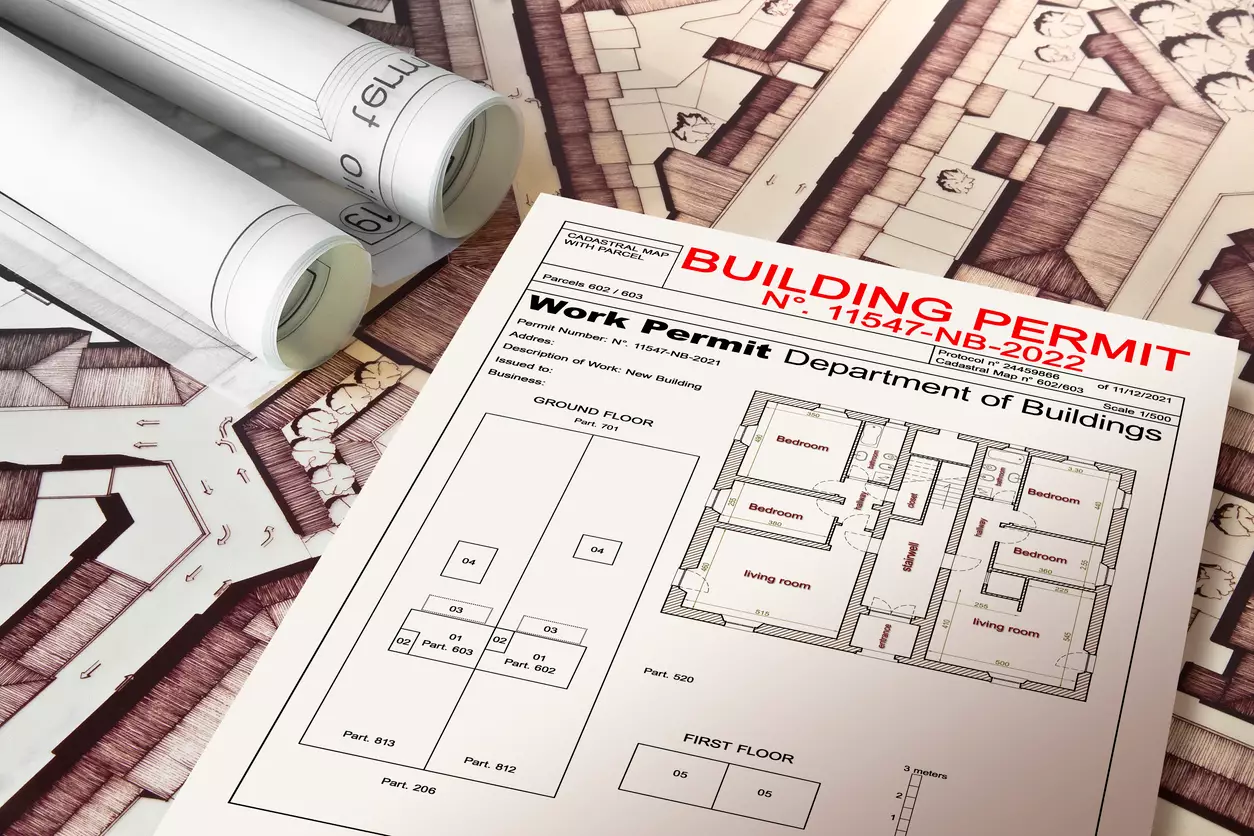What Is a Lien on a House and How Does it Work?

Table of Contents
- What Is a Lien on a House and How Does it Work?
- What is a Lien on a House?
- How Does a Lien on a House Affect Property Ownership?
- Understanding Different Types of Liens on a House
- Key Facts You Should Know
- How Liens Impact Home Sales and Transfers
- Steps to take if there’s a Lien on Your House
- The Consequences of Ignoring a Lien on Your Property
- How to Remove a Lien on a House?
- How to Protect Your Home from Potential Liens
- Understanding the Legal Process Behind Liens on Property
A lien is a way for a creditor to have a legal right to a property in the event a proprietor fails to honor their financial responsibilities. They may be issued following unpaid rent, mortgages, contractor bills, or a court judgment. Liens also significantly affect the owner's ability to sell or transfer the property until the debt is fully paid.
What is a Lien on a House?
Liens are legal claims set against a property by creditors due to unpaid debts owed by the proprietor. This is a way for the creditor to secure interests within the property, so they have a right to its value if the debt is unpaid. An example of what a lien is on a house would be a mortgage type. Here, the lender has a claim until the loan is completely paid. Tax liens imposed by the government also fit into this definition.
Liens may come from unpaid contractor bills or judgments from the courts. Though a lien does not immediately mean the transfer of ownership, it can prevent the owner from selling or refinancing until the debt has been resolved. Sometimes, if the debt is unpaid, the creditor can force the property sale to recover the amount owed. Liens are also one way to protect the creditors.
How Does a Lien on a House Affect Property Ownership?
Liens may significantly affect one's ability to sell or transfer a house. When they are placed on a home, they become a legal burden on the owner. That means the property cannot be sold or refinanced until the lien is resolved. Potential purchasers usually require a clean title that does not have liens before proceeding with the transaction.
If a homebuyer tries to sell the house, the lien has to be paid off, typically from the sale proceeds, to legally transfer ownership. At the same time, refinancing may not be allowed unless the lien has been addressed. This is because lenders view the lien as a risk to financial interest. From a legal perspective, liens do not mean the transfer of ownership to the creditor, but they restrict the homeowner's rights.
The creditor also has a claim on the property’s value that may lead to foreclosure or a forced sale if the debt remains unpaid. This would reduce the homeowner’s control over the property until the lien has been cleared. Resolving the lien by paying the debt or negotiating with the creditor is critical to resting ownership rights.
Understanding Different Types of Liens on a House
Liens may take different forms with varying implications depending on the circumstances. The most common types are mortgage, tax, mechanic, and judgment liens.
- Mortgage liens are voluntarily placed on properties when a homeowner takes a mortgage.
- The government imposes tax liens for unpaid property taxes, and they take priority over other types.
- Construction liens occur when contractors or subcontractors are not paid for the work done on the property.
- Judgment liens arise from court rulings against a homeowner in a lawsuit for unpaid debts, such as personal loans or credit card bills.
Key Facts You Should Know
Some of the main aspects concerning what a lien on a house means include its effect on the title. A lien attaches to the title, leading to a legal claim to be resolved before the property is transferred, refinanced, and sold. The priority of the lien is also to be considered. Tax liens generally take the highest priority, followed by mortgage, mortgage, and mechanic liens. This order illustrates the creditors that would get paid the first from the proceeds. Complicating home sales is a factor, considering that liens may delay or prevent sales in the home until they are resolved.
Whether the lien is voluntary or not is also a factor. Mortgage liens tend to be voluntary because the homeowner has to agree to them when taking the loan. Judgment or tax liens are involuntary and are issued without the person’s consent. It also depends on enforcement. If a lien is not paid, the creditor can enforce it through foreclosure or forced sale of the property. Liens may be removed by paying the debt or negotiating a settlement. If needed, the parties can dispute the validity of the lien in court.
How Liens Impact Home Sales and Transfers
Liens typically affect the sale of a property because of the legal obstacles involved. These have to be resolved before the property changes hands. If a lien is present, it would cloud the title, making it difficult to transfer ownership. Purchasers and their lenders usually need to clear titles to ensure there are no claims against the property.
To clear the lien though, the homeowner would have to address the underlying debt. This may mean paying off the debt, negotiating a settlement, or disputing the validity of the lien in court. Once the debt has been settled, the creditor releases the lien, and the homeowner may offer proof of a clear title. Buyers might also worry about the financial stability of the seller or the chances of hidden debts linked to the property. The purchaser may also be concerned about complications in the closing process.
Steps to take if there’s a Lien on Your House
If a lien is placed on the premises, prompt action may help resolve the problem and protect one’s property rights. There are a few steps to consider, though.
- Verify the lien by requesting a copy of the document to confirm validity. Checking for errors in the creditor information or amount may sometimes invalidate the lien.
- Contact the creditor party that placed the lien to understand the debt and discuss repayment. They might be willing to negotiate a plan or settle it for a reduced amount.
- If possible, the debt should be paid so the lien can be released. Upon making the payment, request a release or satisfaction document from the creditor. This will also be filed with the county recorder’s office.
- Seek legal counsel to understand personal rights or to explore the feasible options for a lien. They may assist in negotiating with creditors or invalidate an incorrect lien.
The Consequences of Ignoring a Lien on Your Property
Ignoring a lien on one’s property may significantly affect one’s financial stability and property rights. One of the main risks of not addressing a lien is legal action from creditors. They can take action to enforce the lien, including obtaining a court order to collect the debt.
In some cases, particularly with mortgages, the creditor can foreclose on the property to recover the debt. A foreclosure tends to force the sale of the home at a loss. Unresolved liens may also be reported to the credit bureaus, damaging a person’s credit score. This makes it hard to secure a loan or to have a favorable interest rate.
How to Remove a Lien on a House?
Removal of a lien requires a proactive approach. Begin by getting a copy of the lien document from the county recorder’s office. If the lien is valid, pay the debt and request a lien release document. In the event, it is not possible to pay the full amount, negotiate with the creditor and settle on a feasible payment plan. Any agreement should be done in writing. Liens that are complex or disputed should be handled with the assistance of a real estate attorney. They are in the best position to negotiate with the creditors to negotiate the best settlement terms.
How to Protect Your Home from Potential Liens
To protect the home from a potential lien, one would pay the debt on time, including mortgages, HOA fees, and taxes. Having good credit reduces the risks of disputes. If one hires a contractor, they should resolve disputes promptly to prevent a mechanic’s liens using written contracts and waivers. Tax situations should be communicated to the IRS or state tax authorities to set payment plans and avoid tax liens.
Similarly, one can monitor their property title for any unexpected claims and title insurance for added protection. If financial problems arise, seek legal advice to explore alternatives to prevent liens. By remaining proactive and addressing issues early, the homeowner can safeguard their property to avoid long-term financial issues.
Understanding the Legal Process Behind Liens on Property
The legal process for placing liens on houses varies depending on the lien type. A voluntary lien, like a mortgage, is an agreement between the homeowner and the lender who fills the lien to secure interest. Until the debt is paid. Involuntary liens, including tax or judgment options, are set without the homeowner's consent.

The authorities initiate tax liens for unpaid taxes, while mechanic liens are implemented by contractors who have not been paid for their work or supplies. Judgment liens are set by court rulings in a lawsuit where the creditor wins a case against the homeowner. To contest a lien, the homeowner can verify the lien for errors, request release, or negotiate a settlement with the creditor.
Search Property & Deed Records
Table of Contents
- What Is a Lien on a House and How Does it Work?
- What is a Lien on a House?
- How Does a Lien on a House Affect Property Ownership?
- Understanding Different Types of Liens on a House
- Key Facts You Should Know
- How Liens Impact Home Sales and Transfers
- Steps to take if there’s a Lien on Your House
- The Consequences of Ignoring a Lien on Your Property
- How to Remove a Lien on a House?
- How to Protect Your Home from Potential Liens
- Understanding the Legal Process Behind Liens on Property
Related Articles
Recent Articles
-
![]() Best Real Estate Markets to Invest in 2025 for Maximum Returns
Best Real Estate Markets to Invest in 2025 for Maximum Returns
-
![]() What Is Appraised Value and What Does a Property Appraiser Do?
What Is Appraised Value and What Does a Property Appraiser Do?
-
![]() What Is a Property Deed Transfer and How Does It Work
What Is a Property Deed Transfer and How Does It Work
-
![]() Everything You Need to Know About Building Permits in Florida
Everything You Need to Know About Building Permits in Florida
-
![]() Everything You Need to Know About Commercial Property Insurance
Everything You Need to Know About Commercial Property Insurance










